Variety introduction, baking analysis and cooking suggestions for the winning batch of Coca Zhuoyue Cup in Colombia
Professional coffee knowledge exchange more coffee bean information please follow the coffee workshop (Wechat official account cafe_style)
Colombia Best of Cauca
Colombia Coca Zhuoyu Cup
Producing area: Cauca Province
Micro-area: Suri micro-production area
Soil: volcanic clay
Altitude: 1758 m-2100 m
Variety: Kaddura
Treatment: washing treatment
01? brief introduction of producing areas
Suruiwei producing area of Cauca Province
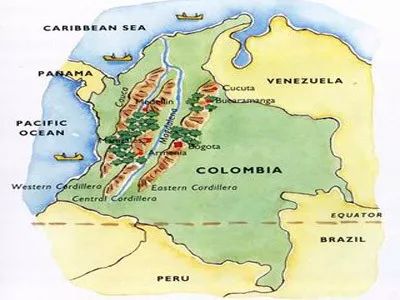
What is the Coca Zhuoyue Cup?
Bidding events such as the Coca Joyo Cup (Cauca Best Cup) have been held since 2014, jointly organized by well-known American traders, local exporters and the Coffee Association of Colombia. The first Coca Zhuoyue Cup received about 200 samples in 2014, compared with more than twice the number in 2015. About 500 small farmers will compete for the competition, and the organizers will select the top 30 from more than 500 samples. The top 12 will be selected by the international jury cup, and raw bean sellers and bakers from all over the world will bid on the last day of the event.
Competitions like the Cauca Cup are actually helpful. It not only increases the income of small farmers, but also has the opportunity to improve their living conditions, but also makes them more willing to invest and improve their coffee production to produce higher quality coffee.
Coffee cultivation in Cauca Province
Cauca province, Cauca department, the name comes from the Cauca River, Cauca River. Located in southwestern Colombia, it is an important producing area of Colombian boutique coffee together with Narino Department and Huila Department.
Cauca province is a certified coffee producing area in Colombia, with an average elevation of 1758m and a maximum elevation of 2100m. The topography, precipitation, temperature and volcanic soil of the area prepare suitable conditions for the growth of coffee. 80% is mountainous, with parallel mountain systems in the east and middle, part of the Andes, and the central mountain system includes two major volcanoes, Sotara and Petacas. The border province of Cauca, like other southwestern producing areas, has a distinct unimodal distribution (monomodal). The dry season mainly occurs from August to September each year, followed by a concentrated coffee season followed by the following year's concentrated coffee harvest season.
The biggest difference in climate between Cauca and other producing areas is probably the relatively large temperature difference, with a daily average temperature of 11 ℃ and a daytime average temperature of 18 ℃. The temperature difference between day and night is an important factor in quality coffee. Low night temperatures and relatively higher elevations slow down the growth of coffee, allowing coffee seeds and beans to more fully absorb the nutrients of coffee fruits, as well as better acidity and commendable special sweetness of Coca Coffee.
The local judges selected 30 batches to enter the finals from 500 batches after four rounds of cup tests, and the 30 international judges conducted two rounds of cup tests to compare the top 10.
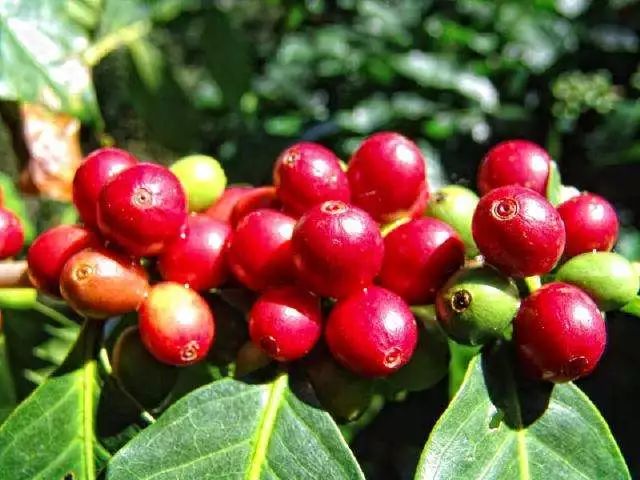
Introduction of Surui micro-producing area
Local coffee farmers grow coffee along the highlands of these mountains, with diverse climatic production conditions, and because of changes in altitude, a large part of Colombia's coffee industry is produced by small farmers. Surrounded by high mountains, the majestic mountains block the air and water vapor from the Pacific Ocean and trade winds from the south, thus maintaining a stable climate in the producing areas. Near the equator, there is plenty of sunshine. The stable climate and sufficient sunshine provide a guarantee for the stability of coffee quality.
Altitude: 1758 m-2100 m
Harvest: first harvest: October-December
Second harvest period: June to August
Variety: Kaddura
02? treatment method
After full washing, the scaffolding is dried in the sun.
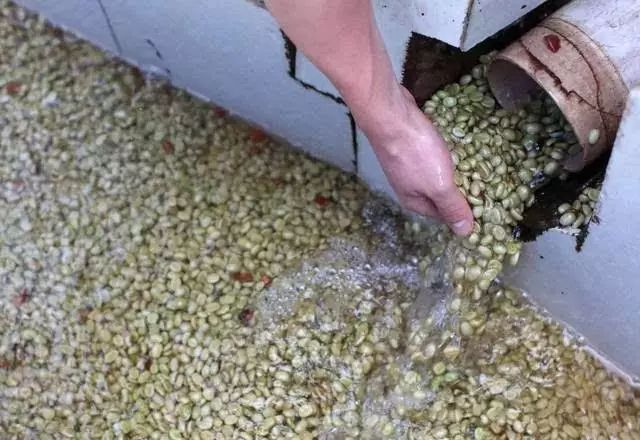
1. Remove the floating beans and pour the coffee beans into a large tank, the immature inferior beans will float to the surface, and the ripe and full fruits will sink to the bottom of the water.
two。 Remove the peel and pulp through the pulp screening machine to remove the exocarp and pulp of the coffee fruit. It leaves pectin, endocarp and silver peel.
3. The purpose of this step of fermentation is to use biological treatment to remove pectin. Put the coffee fruit treated by the pulp screening machine into the fermentation tank for 16 hours and 36 hours, the fermentation bacteria will dissolve the pectin.
4. After washing, after fermentation and removal of pectin, the coffee beans will be washed again because the fermentation bacteria and impurities will remain on the coffee beans. In order to clean up, this step consumes a lot of water.
5. Dry and remove endocarp and silver peel to dry the coffee fruit so that the moisture content is reduced to 1014%. Then use the sheller to remove the remaining endocarp and silver peel, that is, to complete the processing.
03? raw bean analysis
[Colombian Cauca washing method]
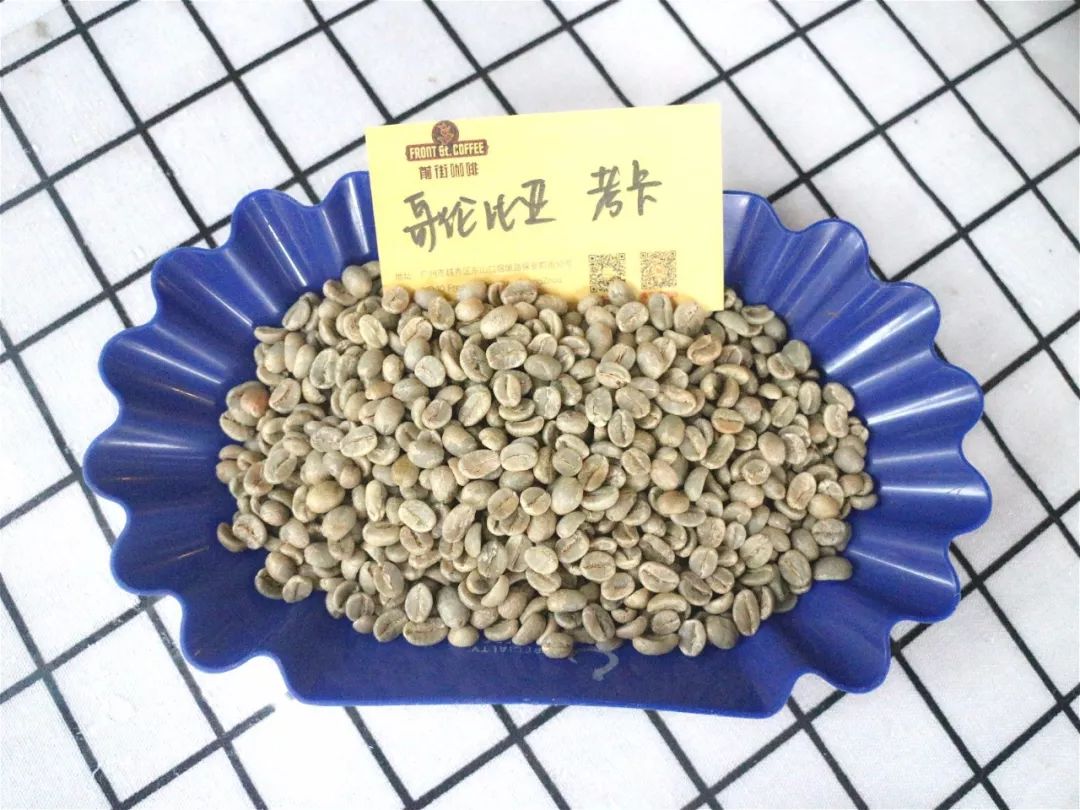
Colombia's main variety Cadura is a single-gene variety of Bourbon. Its productivity and disease resistance are better than Bourbon. Moreover, the tree is shorter and easier to harvest. Unfortunately, it has the same problem of fluctuation of productivity every two years as Bourbon. The flavor is comparable to or slightly inferior to bourbon beans. More importantly, it is extremely adaptable. It does not need shade trees. It can also be vibrant under direct sunlight and can adapt to high density cultivation.
Following the fine tradition of Colombia, in order to pursue good disease resistance and higher yield, many coffee producing areas have updated old coffee varieties into new varieties. In Cauca producing areas, the rare Kadura species are mostly, in addition to iron pickup and bourbon ancient species.
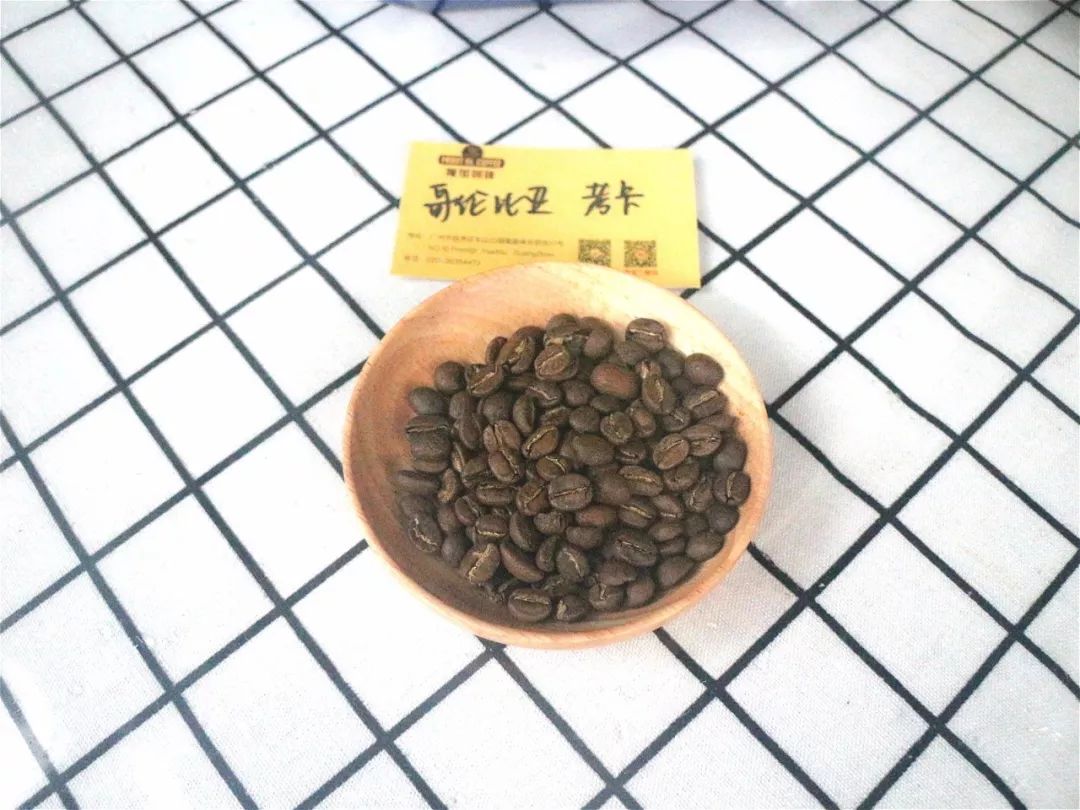
04? baking analysis
This coffee has a round raw bean, yellowish green, good evenness and low moisture content. The goal of baking is medium and deep baking, which retains bright acidity on the one hand and displays multi-layered chocolate and nutty aromas on the other.
In the first batch of baking, the lower bean temperature is relatively high, the bean temperature is 200 degrees, and the firepower is also relatively high. In the process of baking, it was found that the elevation of the bean was extremely high and the quality of the bean was very hard. in order to avoid uneven baking caused by the uneven size of raw bean particles, the baking technique of lengthening dehydration, gradually lowering fire and climbing steadily was adopted. the firepower was adjusted before the beans entered the yellowing point, the dehydration was finished, and the burns of the bean surface were avoided, and the oven was chosen to come out in 2 minutes and 50 seconds after the end of the first explosion to prolong the caramelization reaction time. Retain more nutty and nutty aftertaste.
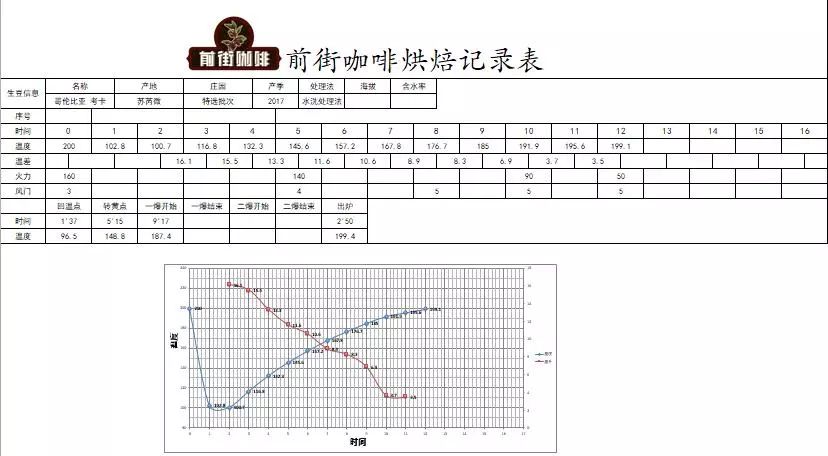
Yangjia 600g semi-straight fire
Enter the pot at 200 degrees Celsius, adjust the firepower to 160 degrees after opening the throttle for 30s, keep the throttle unchanged, the temperature return point is 1 "37, keep the firepower, the bean watch turns yellow in 5: 15" seconds, the smell of grass disappears completely, enter the dehydration stage, the firepower is reduced to 140 degrees, and the throttle is adjusted to 4.
8'55 "dehydration completed, firepower reduced to 185 degrees, 9 degrees 39. At 10 ", ugly wrinkles and black markings appear on the bean surface, and the smell of toast obviously changes to the smell of coffee, which can be defined as a prelude to an explosion. At this time, listen carefully to the sound of an explosion point, to 9: 17", adjust the firepower to 90 degrees, the throttle should be fully opened 5 (the firepower should be very careful, not so small as to be free of bursting sound), develop 2: 50 "after an explosion, 199.4 degrees into the pot.
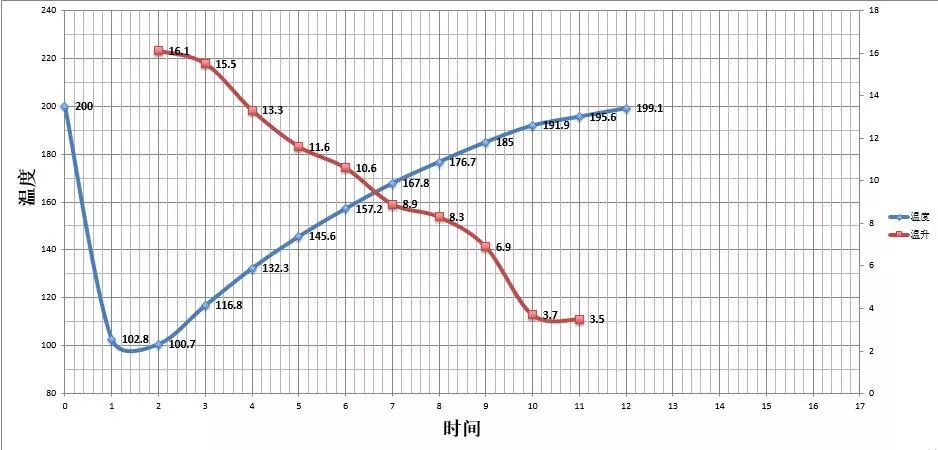
This Colombian Cauca water-washed lime acid is obvious, with sour grape juice, rich floral aroma, high acidity, pleasant sweetness, medium mellowness, and a nutty finish, with a pure, mild, smooth texture and a balanced, lively and varied layered taste.
05? cooking analysis
Recommended cooking method: hand flushing
Degree of grinding: (Japanese little Fuji R440) 3.5
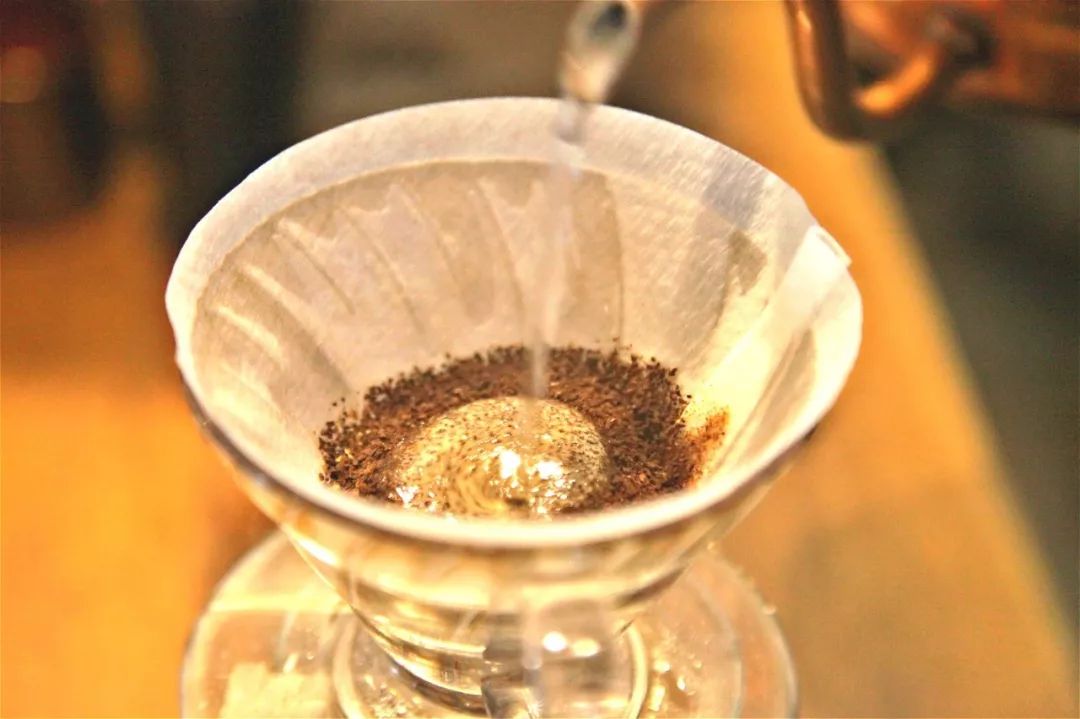
V60 filter cup, 15g powder, water temperature 91-92 degrees, grinding 3.5.The ratio of water to powder is close to 1:15.
35 grams of water is steamed for 30s
Section: water injection to 125g cut off, slow water injection to 225g
That is, 30-125-225g
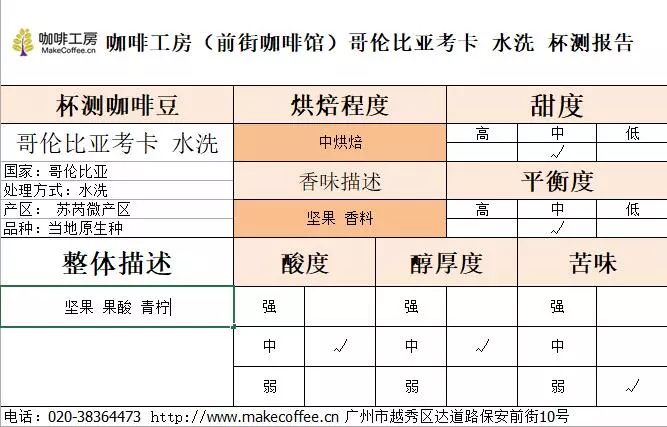
Bean grinder
Grinding degree
Powder quantity
Filter cup
BG
4V
15g
V60
Water temperature
Stuffy steam
The second stage of water quantity
The third stage of water quantity
Total time 2:02
91-92 degrees
35g water for 30s
90g
100g
Total water volume: 225g
Sweetness: ☆☆
Acidity: ☆☆☆
Bitterness: ☆
Other suggestions for trickling extraction:
Normal pressure, recommended grinding degree of 3.5-4, water temperature 91 °C.
Philharmonic pressure, recommended 2.5 grinding degree, water temperature 90 °C
Share the learning results with everyone and the industry.
Ye Jia Xue Fei Xue Picture 90 + candlelight Yunnan Iron pickup Kenya
Autumn hand match sun aricha Yega Chuefei Red Cherry Yega Chefecher
Commercial beans Brazilian Queen's Manor Yellow Bourbon Panamanian Flower Butterfly Essel coffee beans
Comparison of the flavors of Blue Mountain, Yunnan and Paradise Bird Sakuran sunburned and washed in Mantenin, Sumatra
Hawaii KONA aged Mantenin Sakuran Panamanian Boguet Panamanian lover manor
Donald of Colombia, Carnett, Costa Rica, Fairview Manor of Nicaragua
Guatemala Latisa Costa Rica Black Honey Brazil COE third runner-up
Panama BOP first Papua New Guinea Paradise Bird Yega Sheffield Orchard
Honduras West Java Honey deals with Burundian Heart of Africa Rose Summer Village Rose Summer Guatemala Miracle Villa
Panama Hamante Costa Rica double washing Sidamo Lion King
Important Notice :
前街咖啡 FrontStreet Coffee has moved to new addredd:
FrontStreet Coffee Address: 315,Donghua East Road,GuangZhou
Tel:020 38364473
- Prev
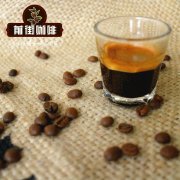
Civet coffee is just a cup of commercial coffee with a very textured and special flavor.
Professional coffee knowledge exchange more coffee bean information please follow the coffee workshop (Wechat official account cafe_style) civet coffee has not been updated for a long time, it is not that I no longer love coffee, but recently I am too busy to multitask! Needless to say, I accidentally got a bag of civet coffee a few days ago. I can't wait to make a cup to share my taste with you.
- Next
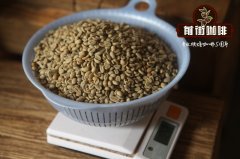
Introduction of yellow Kaduai sun-dried beans in Minas Hilado-Joao Manor, Brazil
Professional coffee knowledge exchange more coffee bean information please follow the coffee workshop (Wechat official account cafe_style) Brazil is the world's largest coffee producer accounts for about 33% of coffee production, but because Brazil is located in the tropical rain forest, the terrain is relatively flat with few high-altitude mountain forests, most coffee is grown in low-altitude non-volcanic soil areas, and there is not much shade as a shade.
Related
- Detailed explanation of Jadeite planting Land in Panamanian Jadeite Manor introduction to the grading system of Jadeite competitive bidding, Red bid, Green bid and Rose Summer
- Story of Coffee planting in Brenka region of Costa Rica Stonehenge Manor anaerobic heavy honey treatment of flavor mouth
- What's on the barrel of Blue Mountain Coffee beans?
- Can American coffee also pull flowers? How to use hot American style to pull out a good-looking pattern?
- Can you make a cold extract with coffee beans? What is the right proportion for cold-extracted coffee formula?
- Indonesian PWN Gold Mandrine Coffee Origin Features Flavor How to Chong? Mandolin coffee is American.
- A brief introduction to the flavor characteristics of Brazilian yellow bourbon coffee beans
- What is the effect of different water quality on the flavor of cold-extracted coffee? What kind of water is best for brewing coffee?
- Why do you think of Rose Summer whenever you mention Panamanian coffee?
- Introduction to the characteristics of authentic blue mountain coffee bean producing areas? What is the CIB Coffee Authority in Jamaica?

